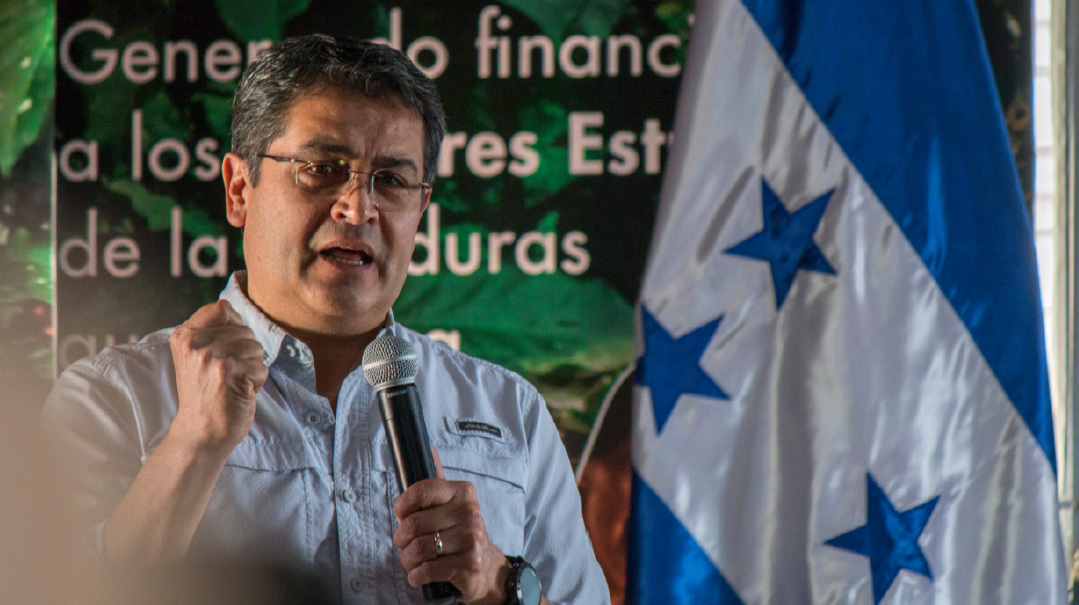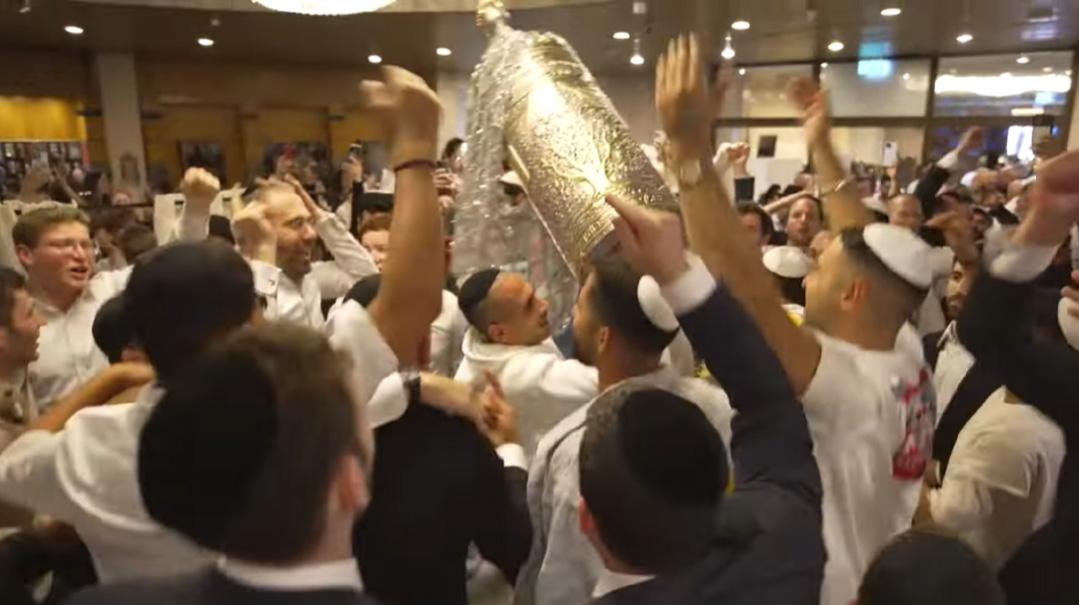Grabbing Ahold of Torah

There is a feeling among besieged Jewish students that “living a more Jewish life is all we can do”
I am just back from a week of speaking in Los Angeles both to adult groups and in local schools. Needless to say, there was a great thirst to understand better the lessons of the past seven months since Simchas Torah.
The lessons enumerated in a lecture entitled “The Great Clarification” were not, in the main, salutary. First, neither the existence of the State of Israel nor Jewish settlement in the Land of Israel can be taken for granted. Israel is surrounded by enemies bent on its destruction from every side.
Second, all those institutions on which we relied for our security — in particular, the IDF — proved to be not nearly so invulnerable as we had all assumed. A billion-dollar security fence between Gaza and the surrounding Jewish communities proved to be no barrier at all to cheap hang gliders.
It took one of the most powerful armies in the world five or more hours to even respond as the Hamas hordes overran settlements surrounding Gaza and slaughtered more than a thousand Jews, even though attack helicopters could have reached those kibbutzim and moshavim in short order.
Yehuda Alon, a religious farmer who left his early morning Simchas Torah minyan and switched on his cell phone after hearing prolonged rocket fire from Gaza, summed it up best with an anecdote. When Alon asked his commander why the order to report to base was coming via WhatsApp and not from the IDF directly, his commander replied, “There is no army.” (See “Bitter Fruits” elsewhere in this issue.)
Just as at the outset of the Yom Kippur War, fifty years earlier almost to the day, the arrogance of military intelligence that our enemies would never dare attack us led to clear evidence of an impending assault being ignored.
Third, for any who doubted it, Iran’s launch of over 300 drones and missiles at Israel on the night of April 13 made clear that we are war with a soon-to-be-nuclear Iran. Though Israel and various allies succeeded in eliminating all but one of those missiles, Iran is playing offense, while both Israel and America are playing only defense. American policy is: Only Iranian proxies can be retaliated against, but Iran must never be forced to pay a direct price, no matter how many times the mullahs chant, “Death to America.”
Where only one side is playing offense, without fear of retaliation, the offense will eventually break through in some fashion. And in the meantime, it will bankrupt the side playing defense. Israel spent a billion dollars on the night of April 13 alone, while all the Iranian missiles and drones cost a small fraction of that.
Fourth, the century-long Palestinian war on Israel cannot be ended by drawing lines on a map — i.e., a two-state solution — for it has nothing to do with Palestinian self-determination, but only with the destruction of Israel. “From the river to the sea, Palestine will be free” says it all.
Fifth, anti-Semitism has once again proven itself to be, in the words of the late Irish statesman Conor Cruise O’Brien, “a light sleeper.” Jews in 5784, both in Israel and the West, have rejoined the long chain of Jewish history, and are subject to attacks on our very existence as Jews. One of the main goals of campus demonstrators against Israel is to make Jewish college students embarrassed to be Jews, rather than seeing their Judaism as a precious heritage to be transmitted to following generations.
FORTUNATELY, I LEARNED long ago never to leave audiences with only a depressing message and without a vision of what to do going forward. Indeed, there is a silver lining in all that I outlined above, and it lies in the rediscovery by many Jews of their pride in being Jewish and their determination to become better Jews.
The positive side of being an am keshei oref (a stiff-necked people) is that if non-Jews hate and attack us for being Jewish, we will grab on ever more firmly to being Jewish. As Lily Cohen, a columnist for the Northwestern University student newspaper, put it, “I am more proud of my Jewish identity than anyone can ever hate me for it.”
One source of optimism has been the tremendous fighting spirit of the IDF. Colonel Richard Kemp, a veteran of a lifetime of combat, has said that he has never seen an army as imbued with fighting spirit as the IDF is at present. My friend Rabbi Reuven Tradburks, the Rabbinical Council of America representative in Israel and someone who meets with soldiers on an almost daily basis, told me recently that he has not spoken to one soldier who is not absolutely confident that the IDF will succeed in destroying Hamas entirely as a military threat. Despite fighting in the most treacherous possible urban and underground terrain, IDF casualties have been a fraction of what was expected at the outset of the IDF’s entry into Gaza. And many of those casualties, Jonathan Schanzer argues in Commentary, are attributable to restraints placed on Israel by America.
That fighting spirit derives in large part from a feeling of connection to a very long Jewish history. That explains why 7,400 IDF soldiers to date have undertaken to put on tefillin for the rest of their lives in return for receiving a pair.
In last week’s Jerusalem Post Magazine, Brig.-Gen (res.) Amir Avivi, former commander of the engineering corps in Gaza and founder of Israel’s Defense and Security Forum (IDSF), related his experience from Operation Defensive Shield, at the height of the Second Intifada. After ten months of fierce battles day and night to prevent terror attacks from Judea and Samaria, his men were given three weeks leave, prior to another ten-month shift.
He discovered that over half had never been to Jerusalem. So he took them to Jerusalem for a week of touring, including the City of David and the Kotel. When their battalion returned to combat, Avivi attests, it had been transformed. The same insight about the power of attaching IDF soldiers to Jewish history and providing them with some understanding of why the collective identity of the Jewish People matters underlay Major (res.) Gilad Olshtein’s decision to establish an ongoing learning program between the three pre-induction academies under his supervision and volunteers from Kesher Yehudi. (The yearlong program has today grown to over 30 pre-induction academies.)
SIMILAR ASSERTIONS of Jewish pride are taking place on American campuses. Natan Sharansky, writing in Tablet magazine, celebrates a recent open letter by 500 current Columbia students, in which they forthrightly affirm the connection between their Jewish identity and the Land of Israel.
He relates that 20 years ago, as an Israeli government minister, he toured American campuses. Upon his return, he told Prime Minister Ariel Sharon that the future of American Jewry would be determined on the campuses, which he styled “occupied territory,” on account of the rapid spread of Middle East studies departments that were thinly disguised dispensers of anti-Zionist propaganda.
What disturbed him most were those Jewish students who expressed a desire to speak out against BDS, but feared to do so because it would hurt their grades and thus their future job prospects. Such young Jews he refers to as “doublethinkers.” Based on his experience in the Soviet dissident movement, he knew that if 20 percent of the doublethinkers became dissidents, the regime’s power to contain the spread of free thought would be broken. If so, he concludes, that barrier has been broken, at least at Columbia.
And he is right that the letter is forthright in its assertion of the Jewish connection to the Land of Israel, and the authors’ belief that the historic Jewish homeland constitutes “the only place in the modern world where Jews can safely take ownership of their own destiny. Our experiences at Columbia in the last six months are a poignant reminder of just that.
“We were raised on stories from our grandparents of concentration camps, gas chambers, and ethnic cleansing. The essence of Hitler’s antisemitism was the very fact that we were ‘not European’ enough, that as Jews we were threats to the ‘superior’ Aryan race. This ideology ultimately left six million of our own in ashes.
“The evil irony of today’s antisemitism is a twisted reversal of our Holocaust legacy; protestors on campus have dehumanized us, imposing upon us the characterization of the ‘white colonizer.’ ”
And, as I learned in the course of researching my recent feature on Rabbi Beryl Gershenfeld and the Meor network of campus outreach programs he has created, assertions of Jewish pride are increasingly associated with a desire for greater Jewish learning and mitzvah observance. The students on a Meor Solidarity mission currently in Israel — one of eleven that will take place over the summer, in which participants volunteer four hours a day and learn Torah four hours — told Rabbi Gershenfeld after a recent question-and-answer session, “The more we understand, the stronger we feel.”
There has been a sharp upsurge in the number of those students expressing a desire to study in yeshivah and to eventually live in Israel. Meor recruitment has never been easier. In part, that reflects a desire of Jewish students to be “enveloped” by the Jewish community and to feel safe. The challah bakes that used to take place once every six weeks in the apartment of Rebecca Klamen, an educator on the Meor staff at University of Pennsylvania, now takes place every week, and her Shabbos meals are filled to overflowing.
But in addition to being enveloped by a community, there is a feeling among besieged Jewish students that “living a more Jewish life is all we can do,” says Klamen. Accordingly, Meor — Penn developed an entire new curriculum in Jewish living, in which students hear from a sofer, a kashrut supervisor, a chesed professional, and a shadchan, etc. Rabbi Rick Fox, director of Meor–Penn, excitedly told me of a student who was eager to put on tefillin just one week after hearing about the mitzvah for the first time, and who told him that he had broken up with his gentile girlfriend.
Just this week, I observed a “pro-Semitism” Zoom session sponsored by Olami International with 40 Meor students, the first of an eight-part series (and one of numerous such series to take place in the coming months). The session began with a 45-minute talk by Jen Airley, the mother of Binyamin Airley, a soldier killed on October 7. She told the group that each of them has a part to play in the ongoing war, through mitzvos and Torah learning, and that nothing any of them do is insignificant. “G-d does not keep anyone in the world who is redundant.”
In answer to a question, she explained why she is not “angry” with G-d nor with her son for volunteering for his mission, and told the students how she saw in unfolding events clear evidence of G-d’s love and care for her and her family, despite her painful sadness. She concluded by blessing all those listening that they should taste how sweet is G-d’s Torah.
After that presentation, Rabbi Gershenfeld presented two core Jewish ideas, as he will in each session. “A kingdom of kohanim,” he explained, is better translated as a nation of “ethical leaders” than as “priests.” And he noted that the word for teaching our children in the Shema — v’shinantam — is from a root meaning to sharpen. It is not just enough to learn Torah, one must fashion the Torah into a sharpened sword to fight for Truth, in a world filled with lies and propaganda.
AT THE END of each talk to students in Torah schools, I challenged them with the example of so many young Jews coming from nonobservant homes and without a lifetime of exposure to Torah u’mitzvos who are nevertheless grabbing on to both. Should we who have had the privilege of tasting Torah and mitzvos all our lives not be grabbing on even tighter to the Tree of Life as well?
That is not just a thought for young Jews but for all of us, as we celebrate our receiving of the Torah.
Chag sameiach.
(Originally featured in Mishpacha, Issue 1015. Yonoson Rosenblum may be contacted directly at rosenblum@mishpacha.com)
Oops! We could not locate your form.







